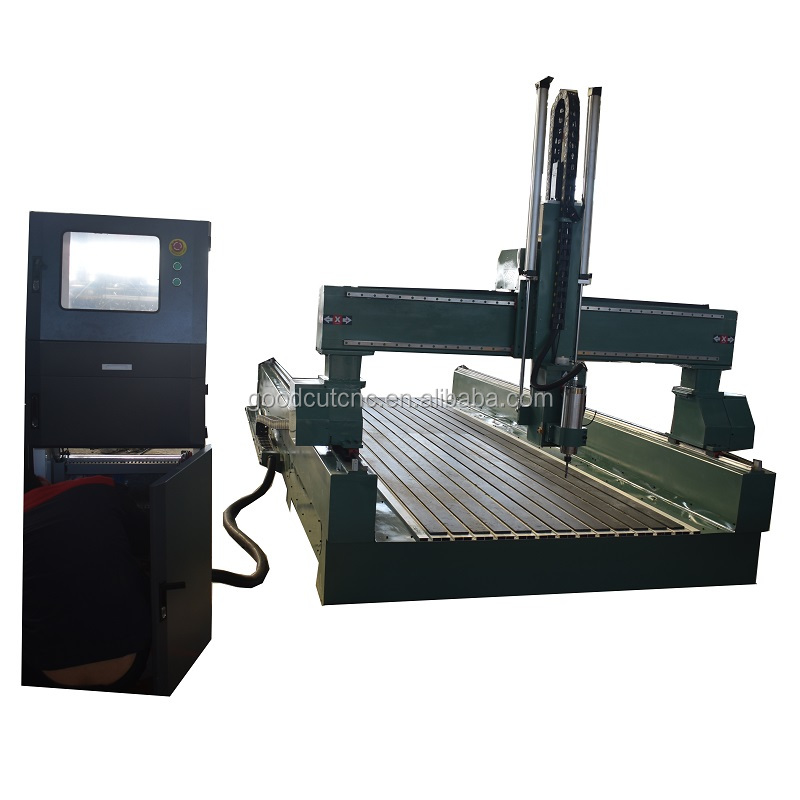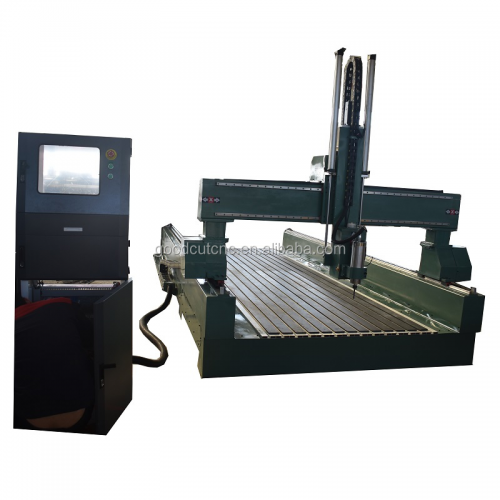

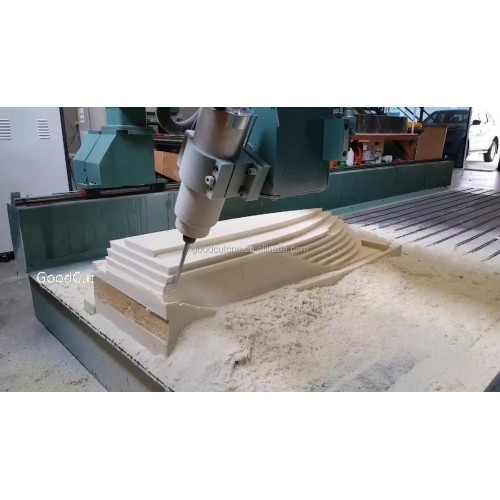

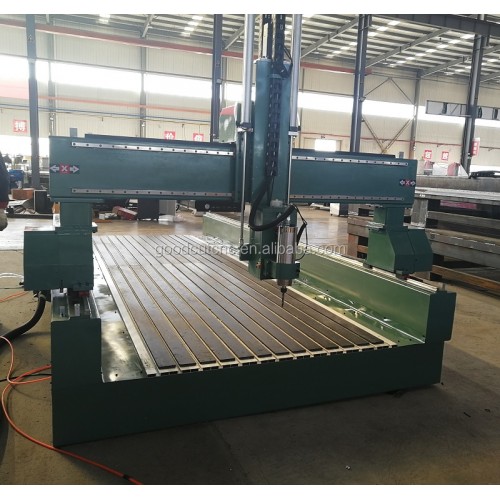
GC1325-4 Axis EPS Molding Machine Plans 3D 4Axis 5Axis CNC Wood Router for Statues Affordable Price
Number | Description | Parameter |
1 | X,Y,Z Working Area | 1300x2500x500 mm*±100° |
2 | Effective working area | 1300x2500x500 mm |
3 | X,Y,Z Traveling Positioning Accuracy | ±0.01/300mm |
4 | X,Y,Z Repositioning Accuracy: | ±0.01mm |
5 | Table Surface | T-slot Table |
6 | Frame | Big Steel Tube Structure |
7 | Y Structure | Helical rack gear , 4pcs HIWIN #35 Linear guide |
8 | X,Z Structure | HIWIN #45 Linear guide |
9 | Max. Power Consumption | (Without Spindle) 5Kw |
10 | Max. Rapid Travel Rate | 40000mm/min |
11 | Max. Working Speed | 30000mm/min |
12 | Spindle Power | HSD spindle 4.5kw or 6kw or 9kw |
13 | Spindle Speed | 0-18000RPM |
14 | Drive Motors | Japan 1.5KW YASKAWA servo |
15 | Working Voltage | AC380V/50/60Hz,3PH (Option: 220V)) |
16 | Command Language | G Code |
17 | Operating System | SYNTEC Control System 21MA |
18 | Rotary device | Diameter300mm, length 2000mm |
18 | Computer Interface | USB |
19 | Flash Memory | 512M |
20 | Collet | ER32 (20mm) |
21 | X,Y Resolution | <0.01mm |
22 | Software Compatibility | UG , Power mill |
23 | Running Environment Temperature | 0 - 45 Centigrade |
24 | Relative Humidity | 30% - 75% |
25 | New type dust collection | 1.5KW with two bags (equal the old type 4Kw ) |
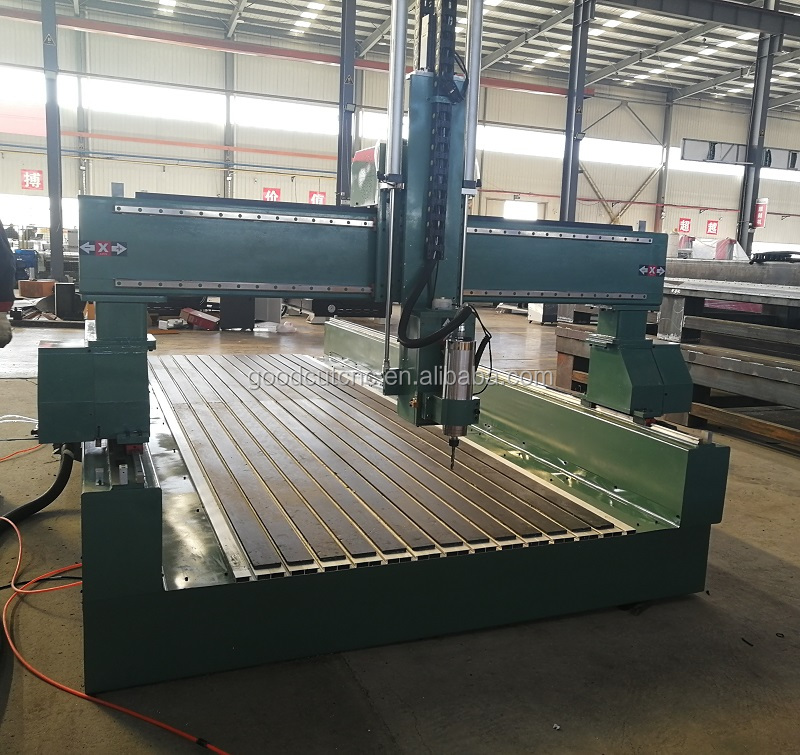
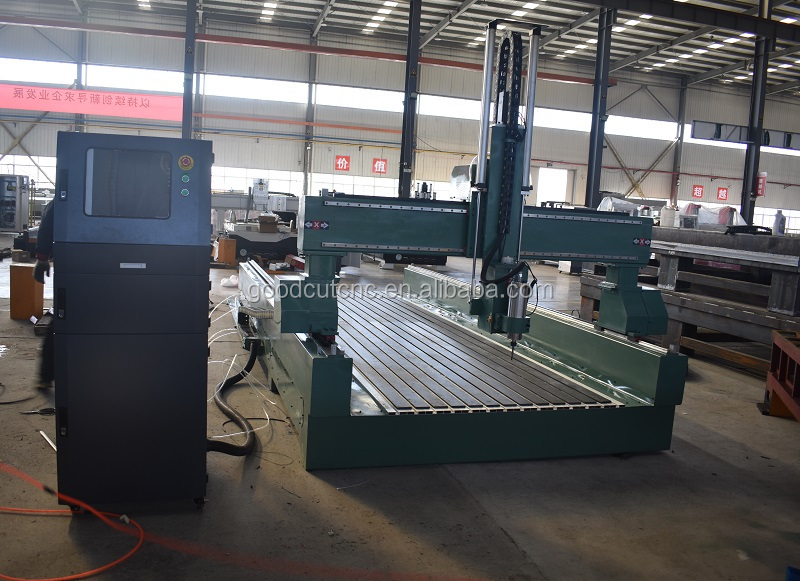
Specification:
- Effective working area :1300x2500x500mm or bigger, size is customized
- Italy HSD brand air cooling spindle: 4.5kw, 6kw, 9kw
- 4th axis can move ±100°
- Taiwan DELTA inverter: 5.5kw or bigger
- Japan YASKAWA servo driver 800w, 1.3kw 1.5KW
- Taiwan SYNTEC control system 4 axis 21MA model
- Helical rack gear for X, Y axis, Taiwan TBI ball screw for Z travel
- Double Taiwan HIWIN #30 or 35 Linear guide for Y axis one side,total 4pcs #35 linear guide for Y axis.
- X, Z axis Taiwan HIWIN #45 linear guide .
- Taiwan TBI ball screw with high precision
- Dust hood for axis,dust collect hood and pipe for dust collector
- 2000mm floor with aluminum &PVC ,1300mm floor steel plate under angle
- Rotary device:diameter 300mm, length 2000mm
- New type dust collection with two bags
- Heavy duty gantry and structure
- Japan Shimpo reducer
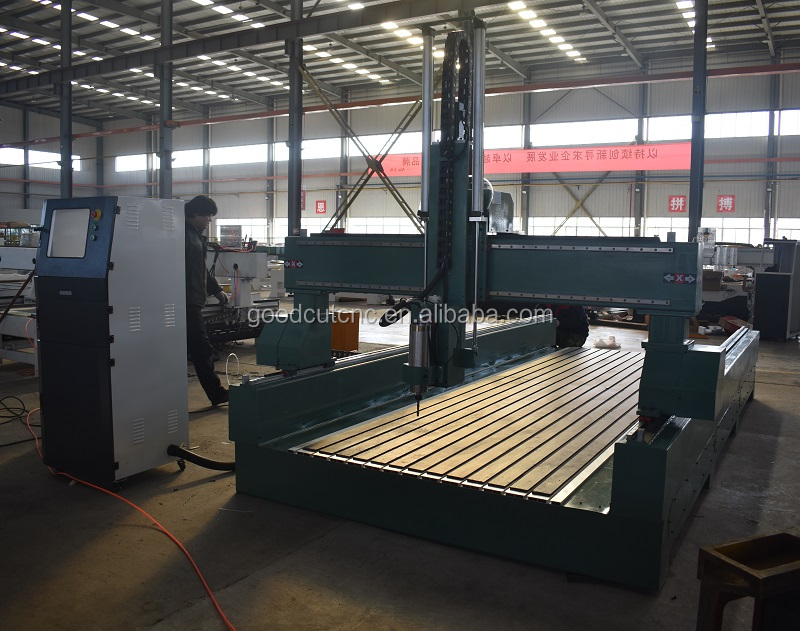
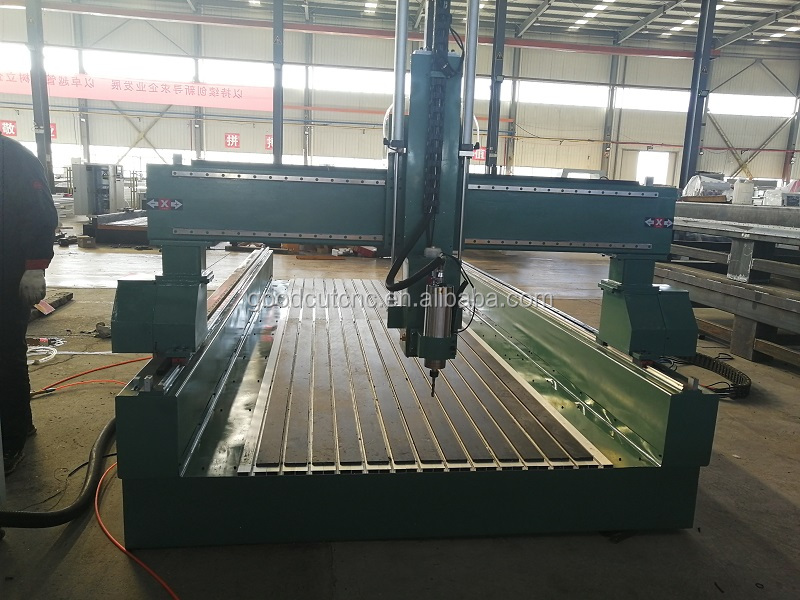
Applicable materials:
•Carpentry: relief and hollow carving of hardwood furniture.
• Furnitures: wooden doors, cabinets, panel, office furniture, solid wood furniture, doors and windows of tables and chairs,
• Advertising: advertising signs, logo production, acrylic cutting, plastic molding, and various materials for advertising decorations.
• Woodworking: audio, game cabinets, computer tables, sewing machines, musical instruments.
• Panel Processing: insulation parts, plasticized workpieces, PCB, bowling track, stairs, anti-fold special board, epoxy resin, ABS, PP, PE, and other carbon mixtures.
• 4-axis CNC machine is applied to aluminum cutting industry, aluminum plate, aluminum plastic plate, aluminum honeycomb plate, aluminum profile, 3D machining process, wave board production, special-shaped artificial sheet cutting, LED, neon slotted literal cutting, plastic suction light box mold production, acrylic, copper sheet, PVC sheet, artificial stone, MDF and plywood sheet cutting & milling.
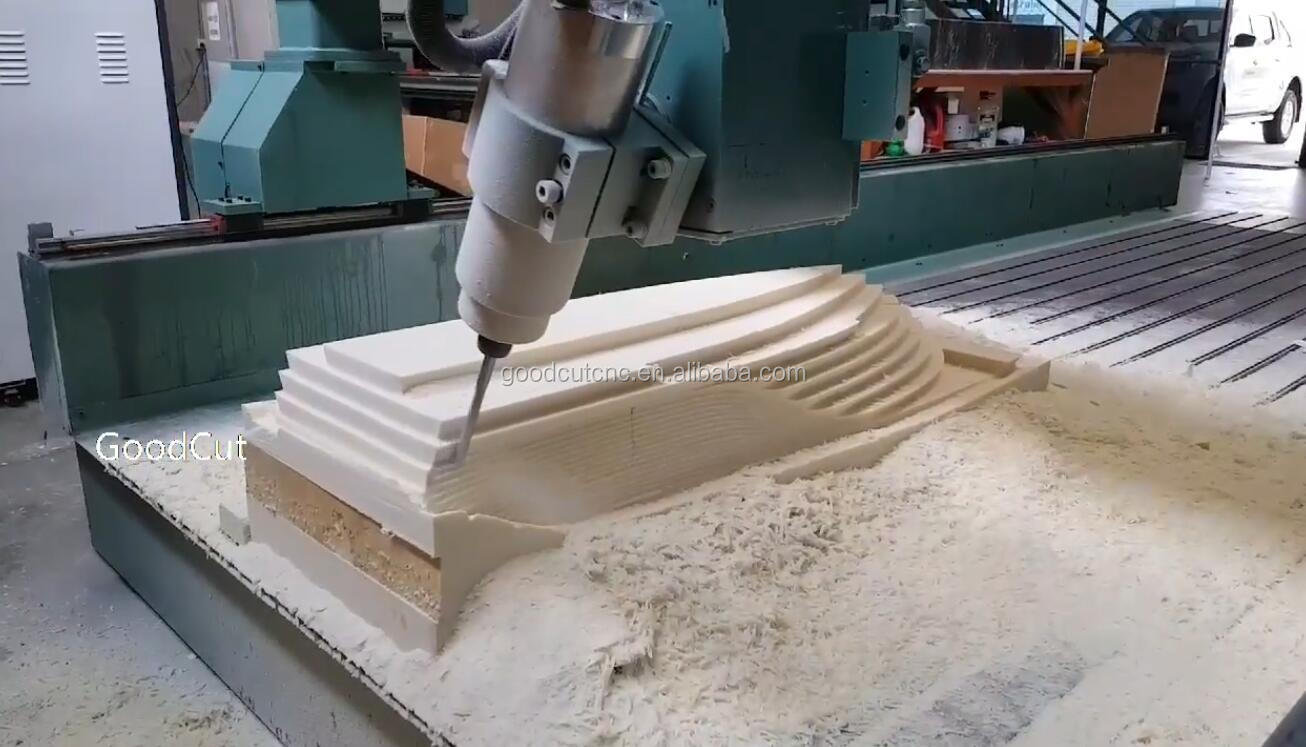
Pros & Cons
• Calculate the rotating cutting path without unfolding the surface.
• No need to rotate the workpiece repeatedly, and complete the tool path calculation at one time.
• Reduce the finishing allowance, and the tool path can be roughed in layers.
• Realize partial rotation processing, can set the angle range and length range.
• Affected by the accuracy of the fixture, the machining of irregularly rotating workpieces usually adopts multi-face rotation positioning machining, and there are always joints between different machining directions.
• Rotary carving without positioning joints adopts the integral method of rotating spindle, and the machine generates an automatically closed rotary cutting path.
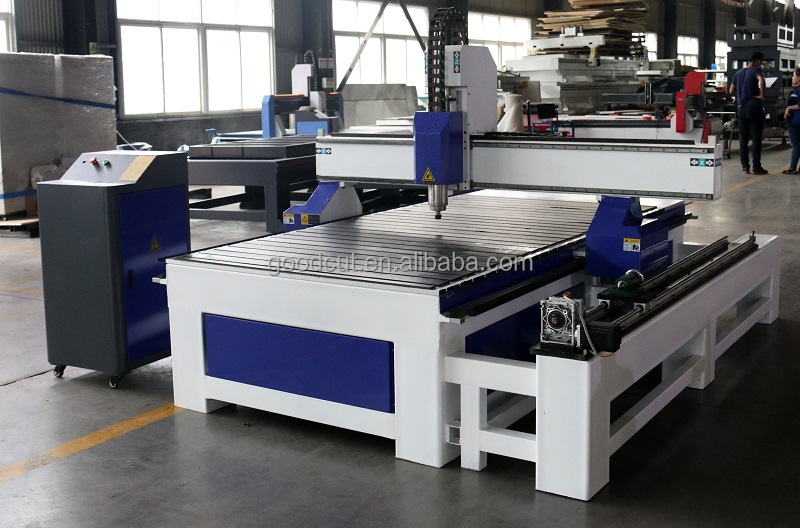
3 Axis VS 4 Axis
3 axis CNC machine has only three coordinate axes, X, Y, and Z, while the 4 axis kit has one more indexing head than the 3 axis kit. The indexing head is a common accessory used for machining complex products. The best auxiliary tool, controlled by the operating system, can realize linkage with other axes. It is mainly used for indexing and positioning machining of workpieces. The indexing device is generally located on the spindle of the machine tool. Under normal circumstances, the machine has three basic axes, X, Y, and Z. The other rotation and feed axes are the fourth axis. The latter can realize the positioning of the tool magazine, the rotary positioning of the rotary table and the indexing head, and more advanced The system can also perform interpolation operations with the basic axis to realize four and five axis linkage.
3 axis machine tool cannot process many surfaces even if it is horizontally rotated through the table. 4 axis is better than 3 axis in this respect. In terms of programming, the difference between 3 and 4 axis is basically the same. The operator who can operate the 3 axis machine tool can quickly get started with the operation of the 4 axis CNC machine, and the operation difference will not be much worse.
.jpg)
4 Axis VS 5 Axis
Four-axis linkage and five-axis linkage generally refer to the number of linkage control axes of the control system. Four-axis linkage must first have four controllable axes, and the four axes can be interpolated motion control at the same time, that is, the four axes can achieve simultaneous linkage control. The motion speed during simultaneous linkage is the composite speed, and It is not separate motion control. It is a point in space that moves through four axes at the same time to reach another point in space. It moves from the starting point at the same time to the end point and stops at the same time. The motion speed of each axis in the middle is the motion interpolation of the controller according to the programmed speed. The speed of each axis is synthesized internally by the algorithm. For a four-axis machining center, it is X, Y, Z axis plus a rotation axis A (also can be B or C, the definition of A, B and C is corresponding to the rotation around X, Y and Z respectively axis, generally the fourth axis is the A axis that rotates around the X or B axis that rotates around the Y axis. This depends on the installation position of the fourth axis on the actual machine tool), and this fourth axis is not only It can move independently and can also be linked with another axis or two axes or these four axes at the same time. Some machine tools have four axes, but they can only move independently. They can only be used as indexing axes, that is, they will be stopped and locked after rotating to an angle. This axis does not participate in the cutting process. It is only used for indexing. The only type can only be called Four-axis three linkage. Similarly, the total number of axes of a four-axis linkage machine tool can be more than 4 axes, it can have five axes or more, but its maximum number of linkage axes is four axes.
5 axis machining means that there are at least five coordinate axes (three linear coordinates and two rotating coordinates) on a machine tool, and it can be processed simultaneously under the control of a computer numerical control system. Linkage means that the axes reach a certain set point at a certain speed at the same time. Five-axis linkage is all five axes. The 5 axis machine tool is a high-tech, high-precision machine tool specially used for processing complex curved surfaces. This machine tool system is useful for a country’s aviation, aerospace, military, scientific research, precision equipment, high-precision medical equipment and other industries.
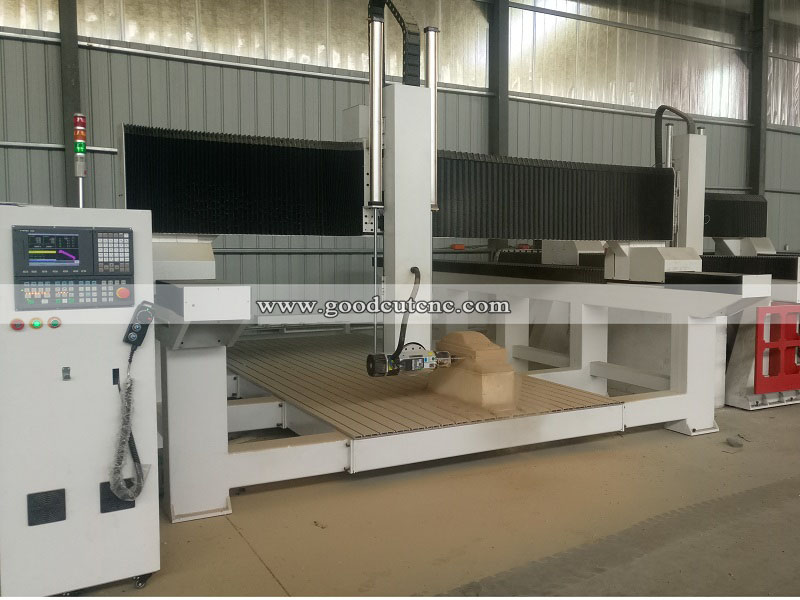
What Is 4th Axis (Rotary Axis)?
The 4th axis is also called as the CNC indexing head, which is a machine tool accessory that clamps the workpiece on the chuck or between the two centers, and makes it rotate, index and position. The advantage of adding the 4th axis to the machine is that it can make the plane of the tool machining more extensive, and can reduce the repeated clamping of the workpiece, improve the overall processing accuracy of the workpiece, and help simplify the process and improve the production efficiency.
Specifically, the 4th axis can complete the tasks that the 3 axis CNC machine cannot complete at one time. It can realize multi-sided processing of the product through rotation, which greatly improves the machining efficiency and reduces the number of clamping, shorten production time.
• The rotation angle can process multiple surfaces at the same time, which improves the overall machining accuracy of the workpiece, which is beneficial to simplify the process and improve the production efficiency.
• The three axes are X, Y, Z three linear moving coordinates, and the 4th axis is generally a rotating axis, which can cause an angular offset between the tool and the workpiece, that is, the tool axis and the surface normal of the workpiece form an angle. One can expand the machining range, and the other can make the machining conditions better.
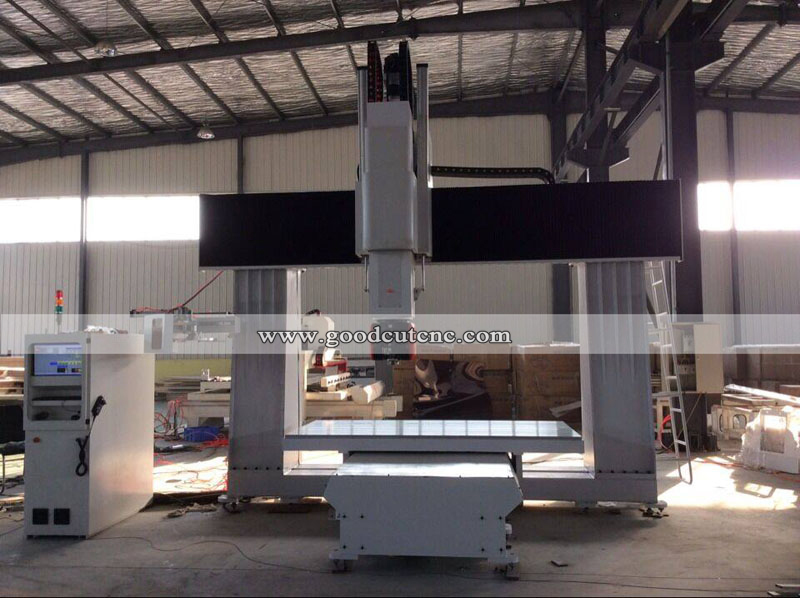
How To Use Rotary Axis (4th Axis)?
Step 1. Put it directly on the platform, so that the gantry needs to be heightened, and the platform size will not be affected when the plane is carved. The rotating shaft can be put on and taken down at any time.
Step 2. Put the side of the platform, the diameter of the rotating shaft affects whether the gantry is heightened. If the diameter is large, the gantry needs to be heightened. If the diameter is 10cm, it is not necessary. .
Step 3. The table top sinks, the table top sinks as a whole, put the rotary axis under the platform, if you carve the plane, put the platform on the rotary axis for carving.



